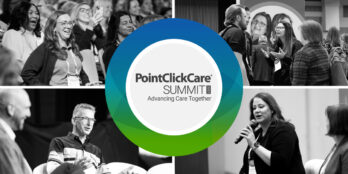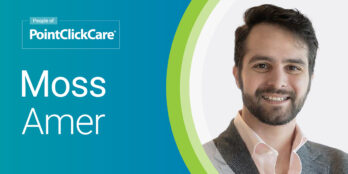
How Will the Patient-Driven Payment Model Affect You?
 3 min
3 min
Innovation, PDPM, Skilled Nursing
What is the Patient-Driven Payment Model (PDPM)?
PDPM is a fundamental change in the way skilled nursing homes are reimbursed for Medicare A services. This method moves skilled nursing in the direction of the Unified Payment System required in the Impact Act for all post-acute care. It will also align reimbursement with the shift from volume to value. It is proposed to decrease administrative burden, projected savings estimated to be $2 billion over 10 years. It is designed to improve the incentives to treat the needs of the whole patient, decrease focus on the volume of services the patient receives and reduce provider burden and the paperwork to track over time.
Why do we need it?
Payment reform has been at the forefront of the skilled nursing industry for several years. In response to requirements in the IMPACT act of 2014, and the resulting PAMA act, post-acute care must have a unified prospective payment system by 2024 (starting in 2021 with a three-year transition period). The issue is all settings don’t use common data to determine payment.
The feeling is that unifying patient costs across the continuum will open up post-acute care choice based on client need. At the same time, there has been a lot of scrutiny from MEDPAC and the Office of the Inspector General on the current RUG IV system, which incentivizes the use of therapies in reimbursement. The more minutes provided (over 720) the higher the reimbursement and the majority of MDS submitted in the highest RUGs categories were within five minutes of the threshold indicating that the threshold was the goal for care and not the therapy being provided. Therapy was incentivized over the provision of complex clinical care. RUGs IV also requires a lot of paper work to get paid meaning many MDS assessments need to be completed through a resident’s stay for payment purposes.
For many years, CMS has been under pressure to reduce the administrative burden associated with RUGs IV reimbursement. All of these things have been driving the need to revise how skilled nursing facilities get paid.
Timeline
The Resident Classification System, Version 1 (RCS-1), was proposed in May 2017. In May 2018, RCS-1 was replaced with PDPM. It was finalized on July 31, 2018 and will go into effect on October 1, 2019.
Benefits
- Reduce required PPS MDS from 5 to 1
- No more therapy minutes for payment category classification
- ICD-10-CM documentation will drive reimbursement process for therapies
- Opportunity to increase reimbursement with co-morbidities
- Shifting resident population away from rehab-intensive focus to more clinically focused care
- More clinically complex residents means more education and resources for staff to support
How You Can Start Preparing Now?
The time for PDPM is now and facilities need to start preparing for this change. To start, you need to identify the processes in place that will be impacted, and thus identify the workflows that will need to be adjusted. You also need to ensure diagnosis coding is accurate.
To do so you need to select the proper primary diagnosis for skilled stay, ensure primary diagnosis is in I8000A, and ensure accuracy of diagnosis and coding of MDS. You also need to ensure accuracy of MDS by capturing clinical conditions accurately. Lastly, you need to improve clinical documentation with timely identification of conditions, skilled documentation, and education.
We’re Here to Help
We are committed to keeping you up-to-date with the developments of PDPM and providing you with solutions to meet these new demands. With Nursing Advantage, you can manage the clinical complexity of your residents with evidence-based nursing processes. Quality staffing is hard to find, but if you can provide consistent practices, you can effectively capture everything needed to optimize PDPM payments and increase the quality of care.
January 8, 2019






